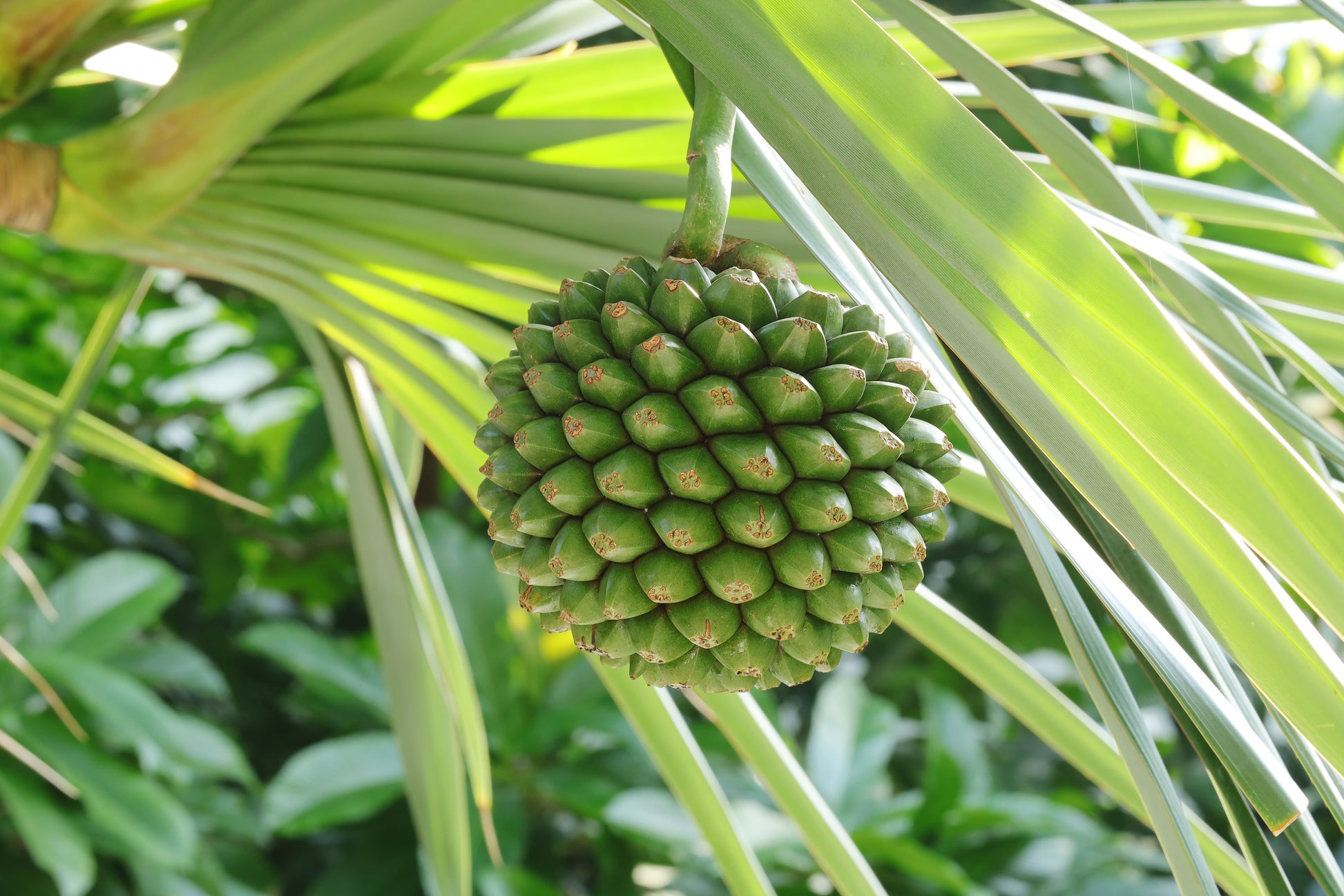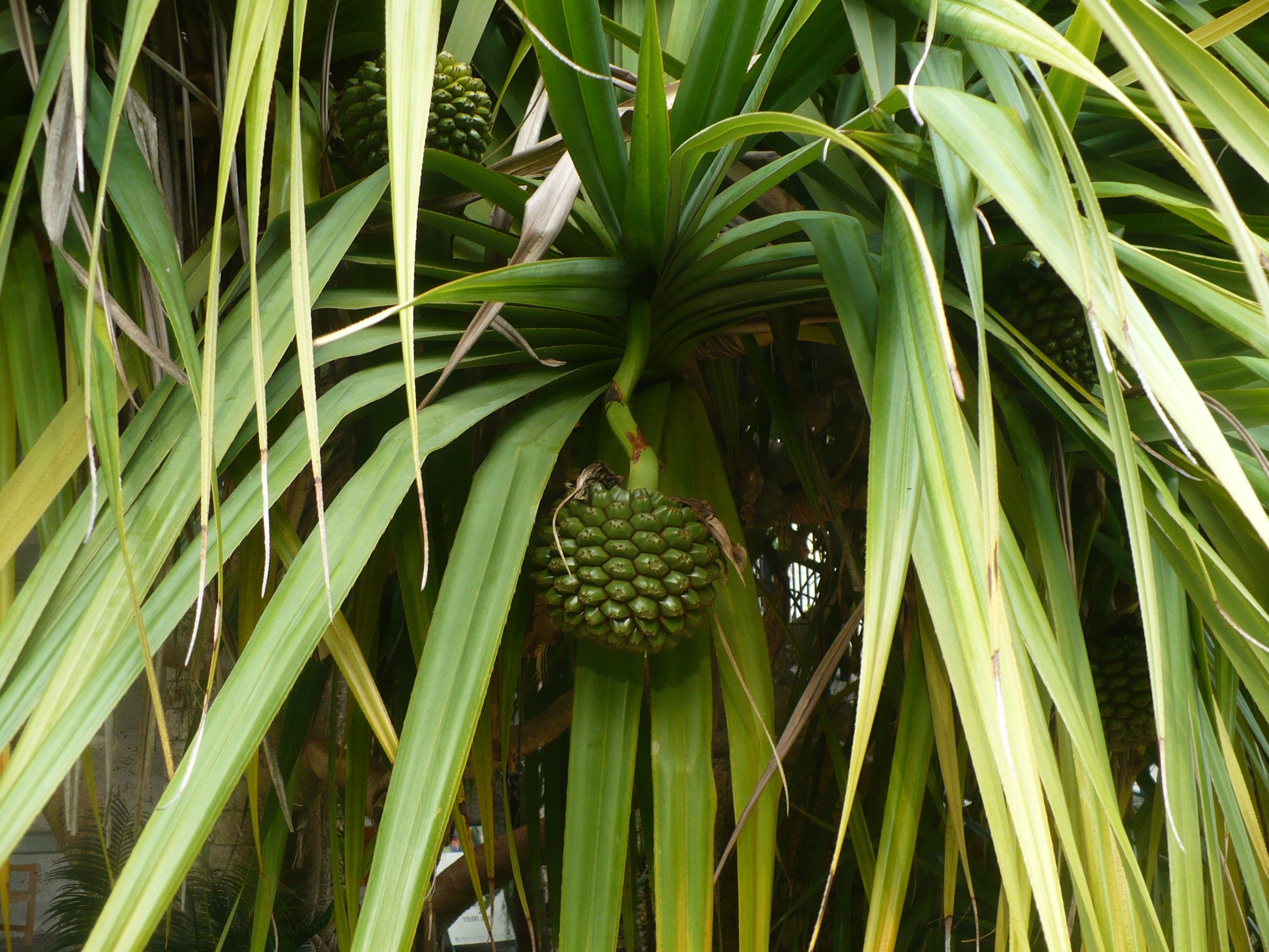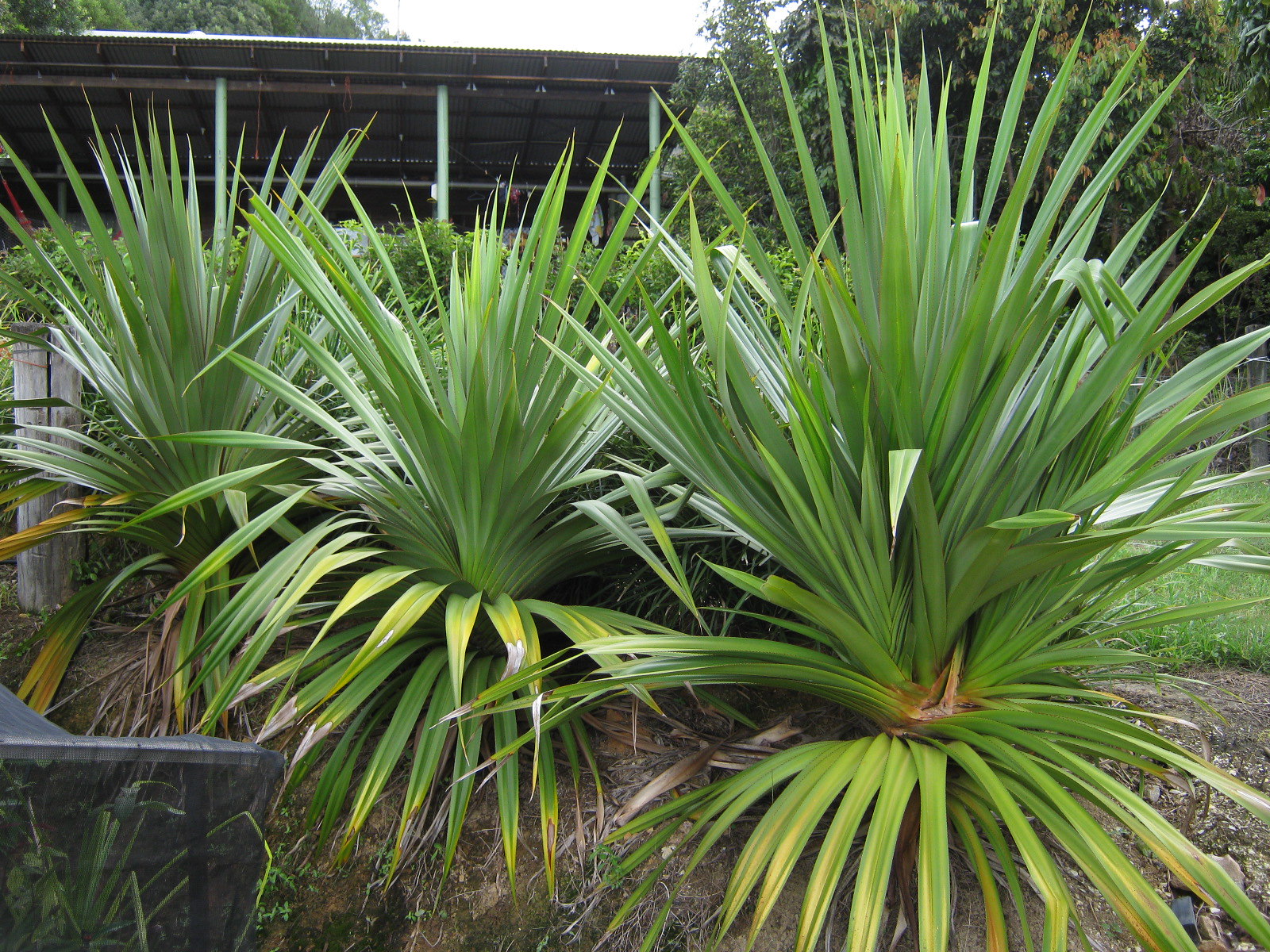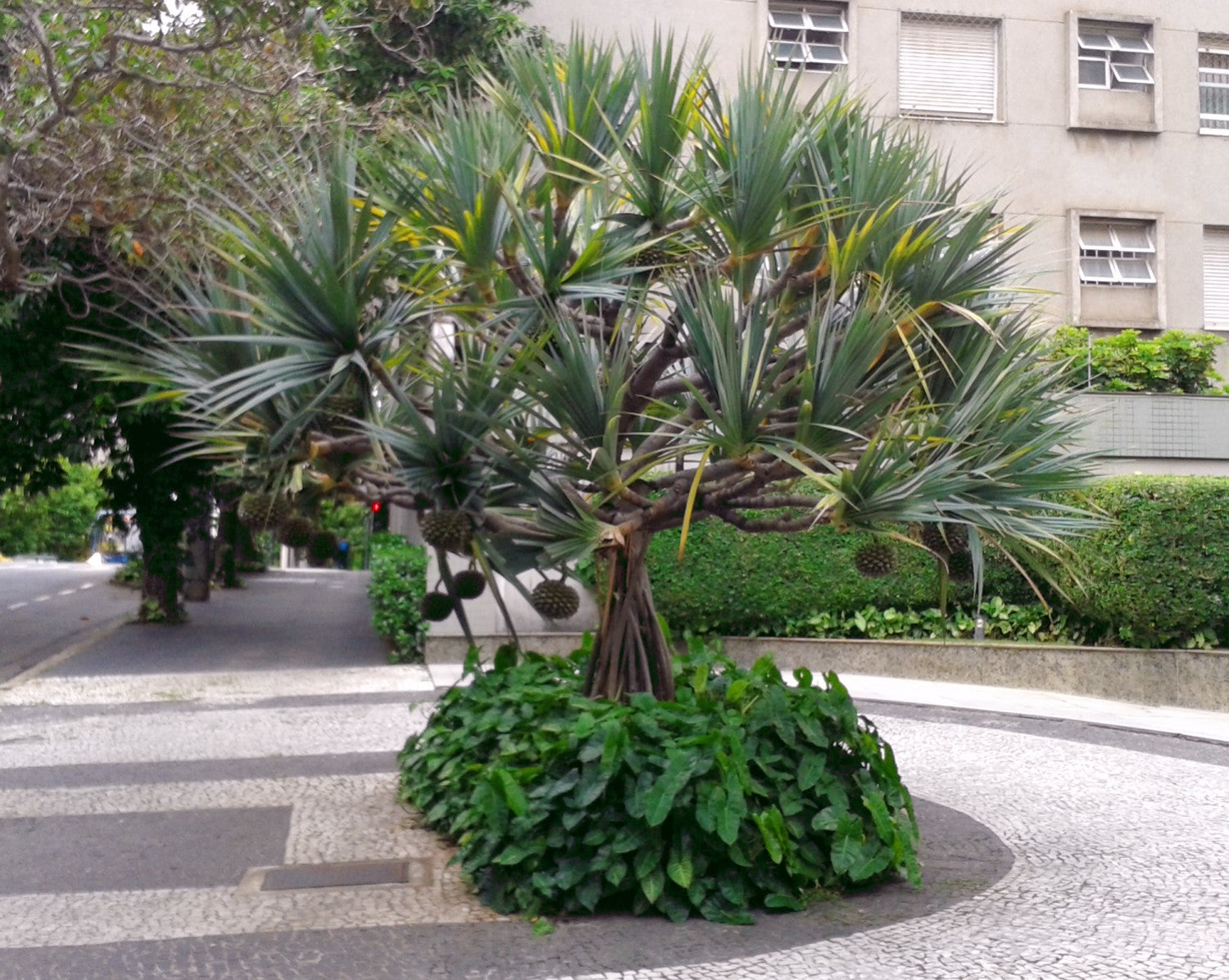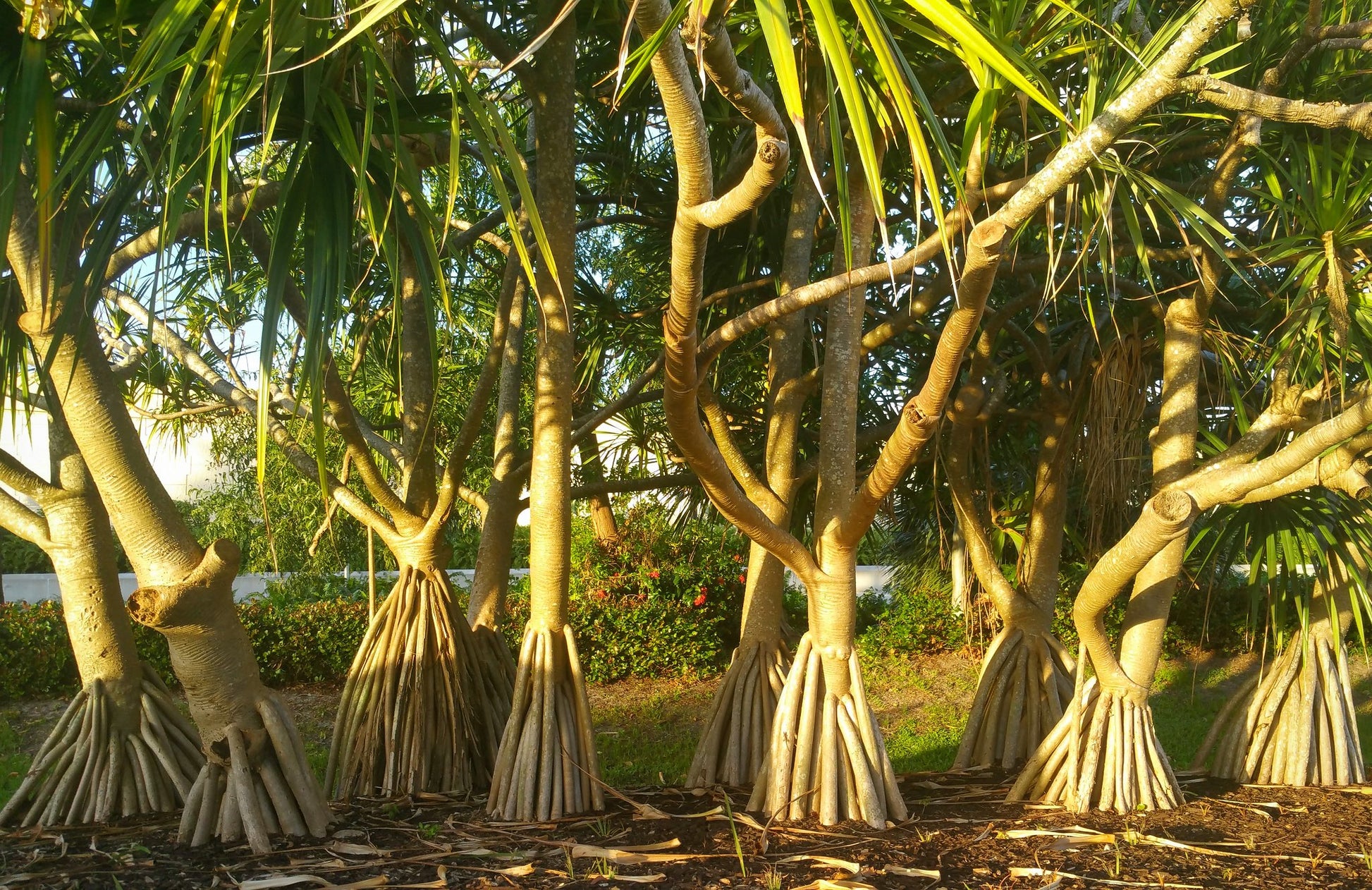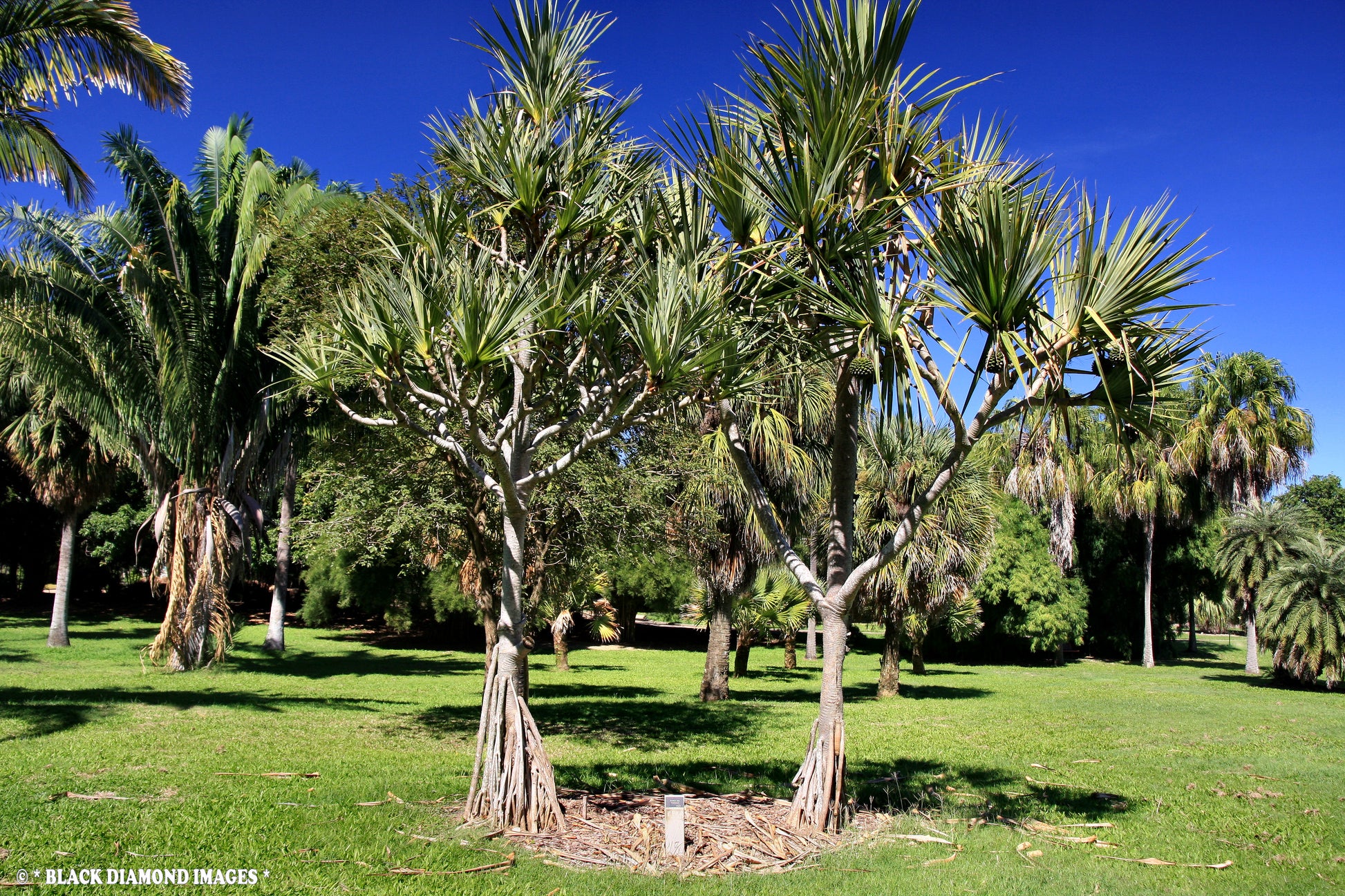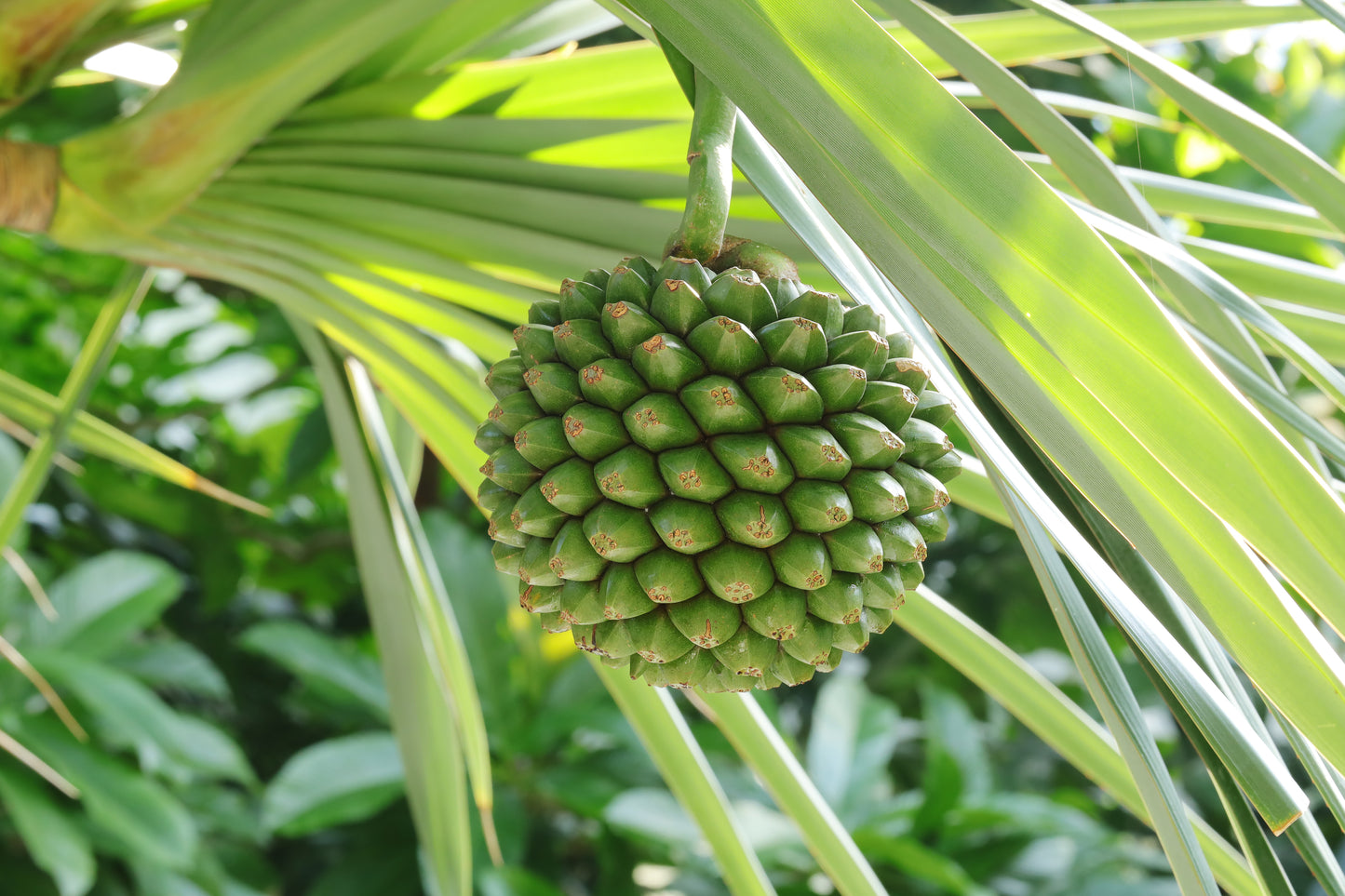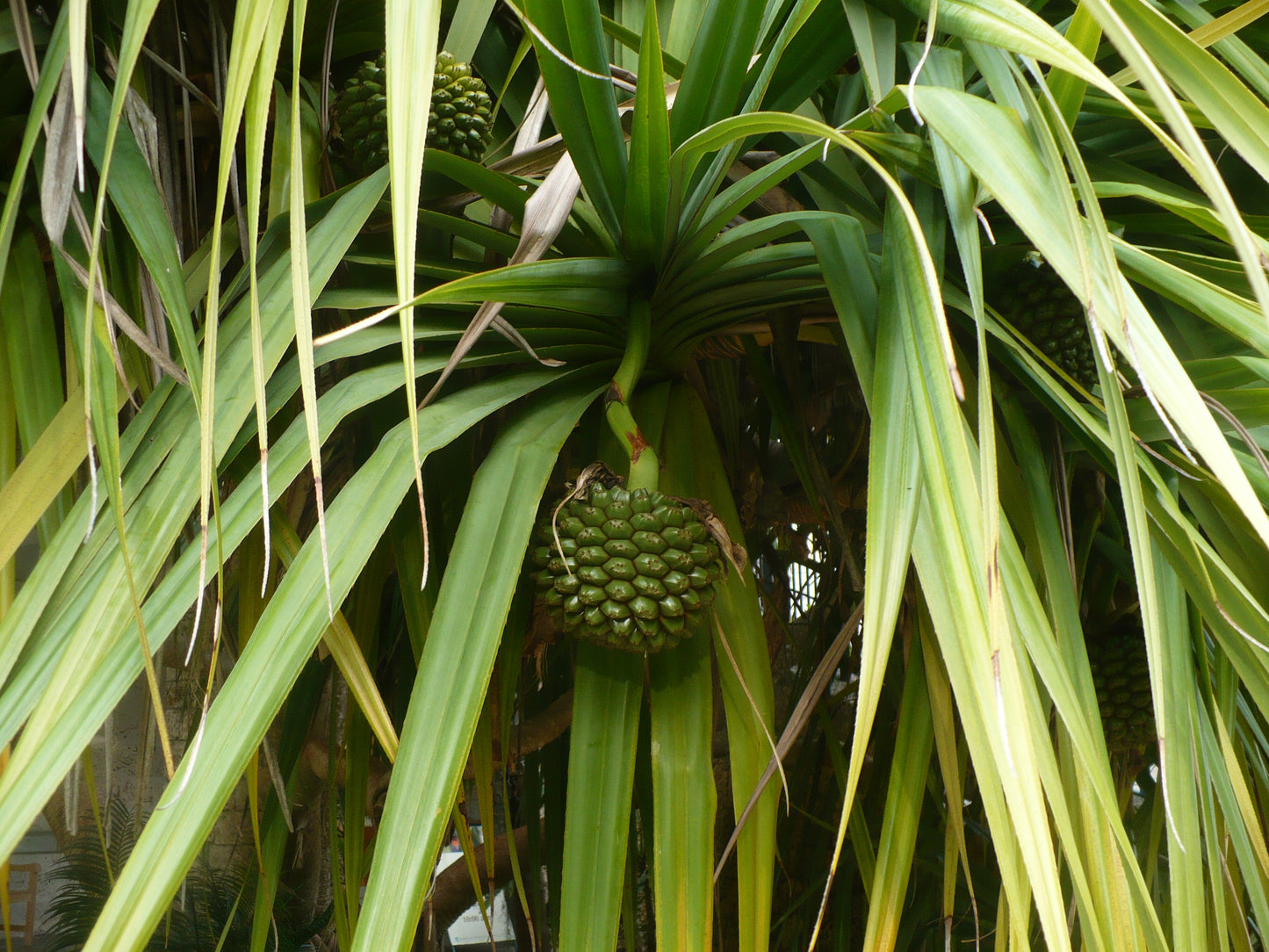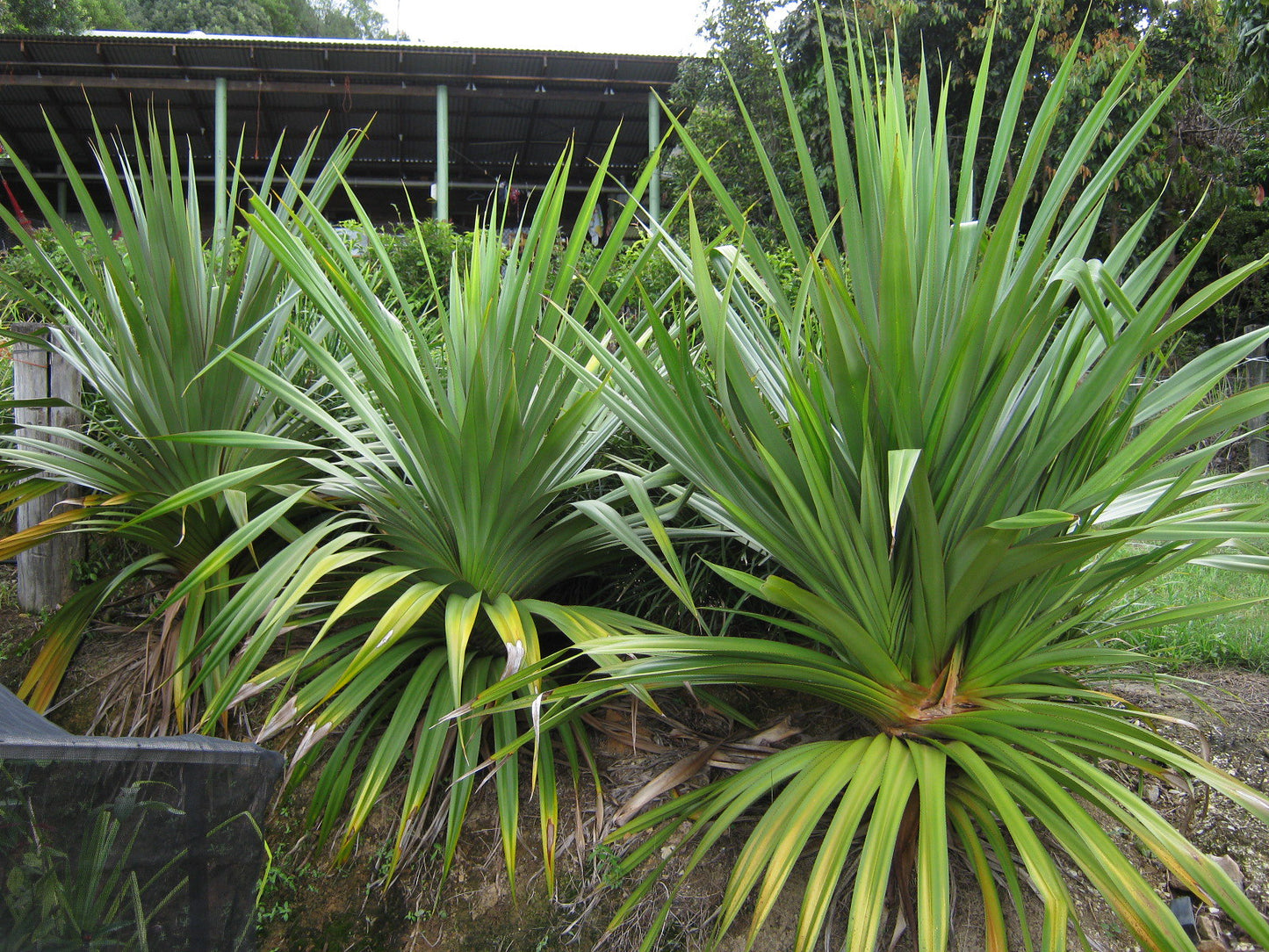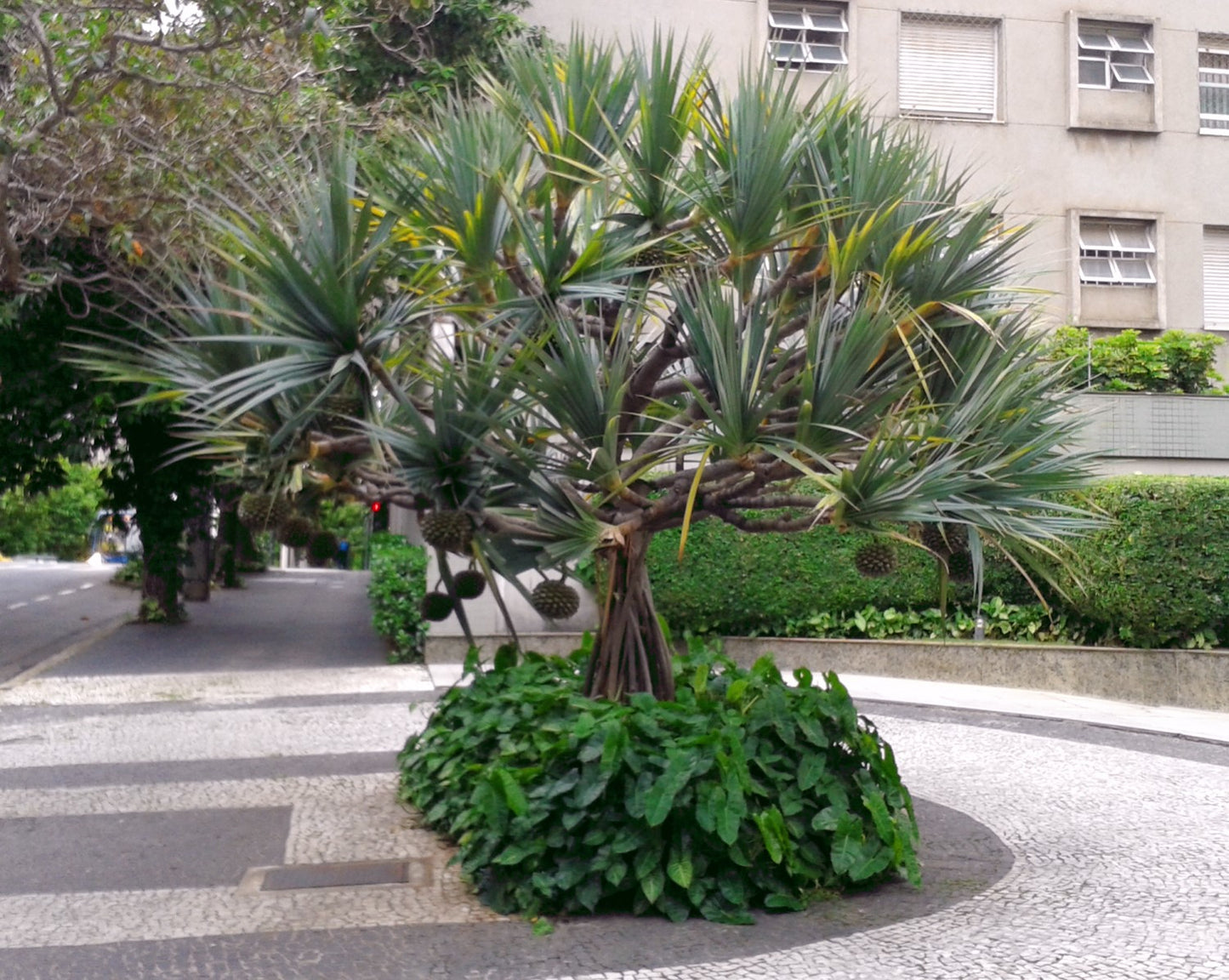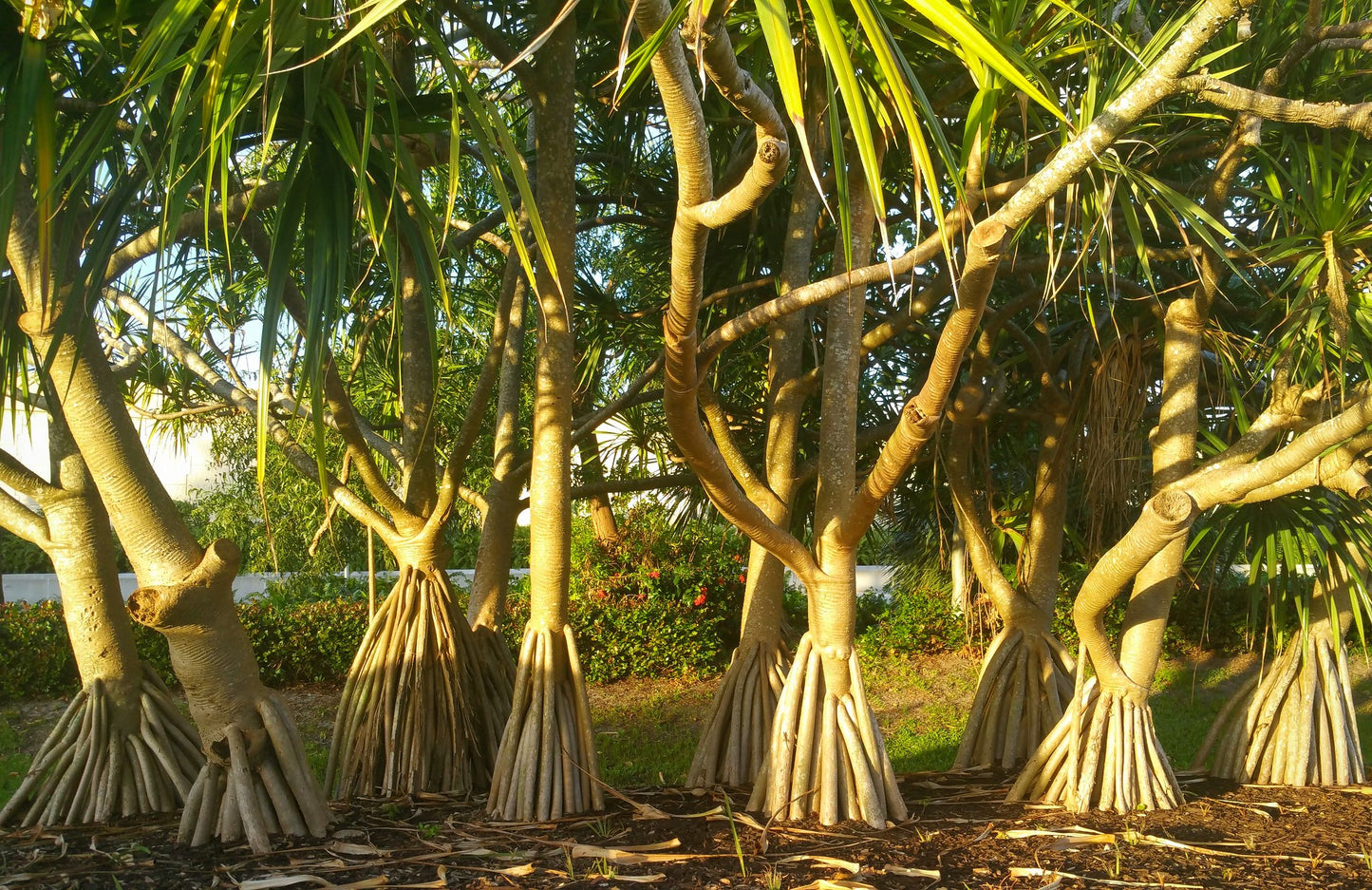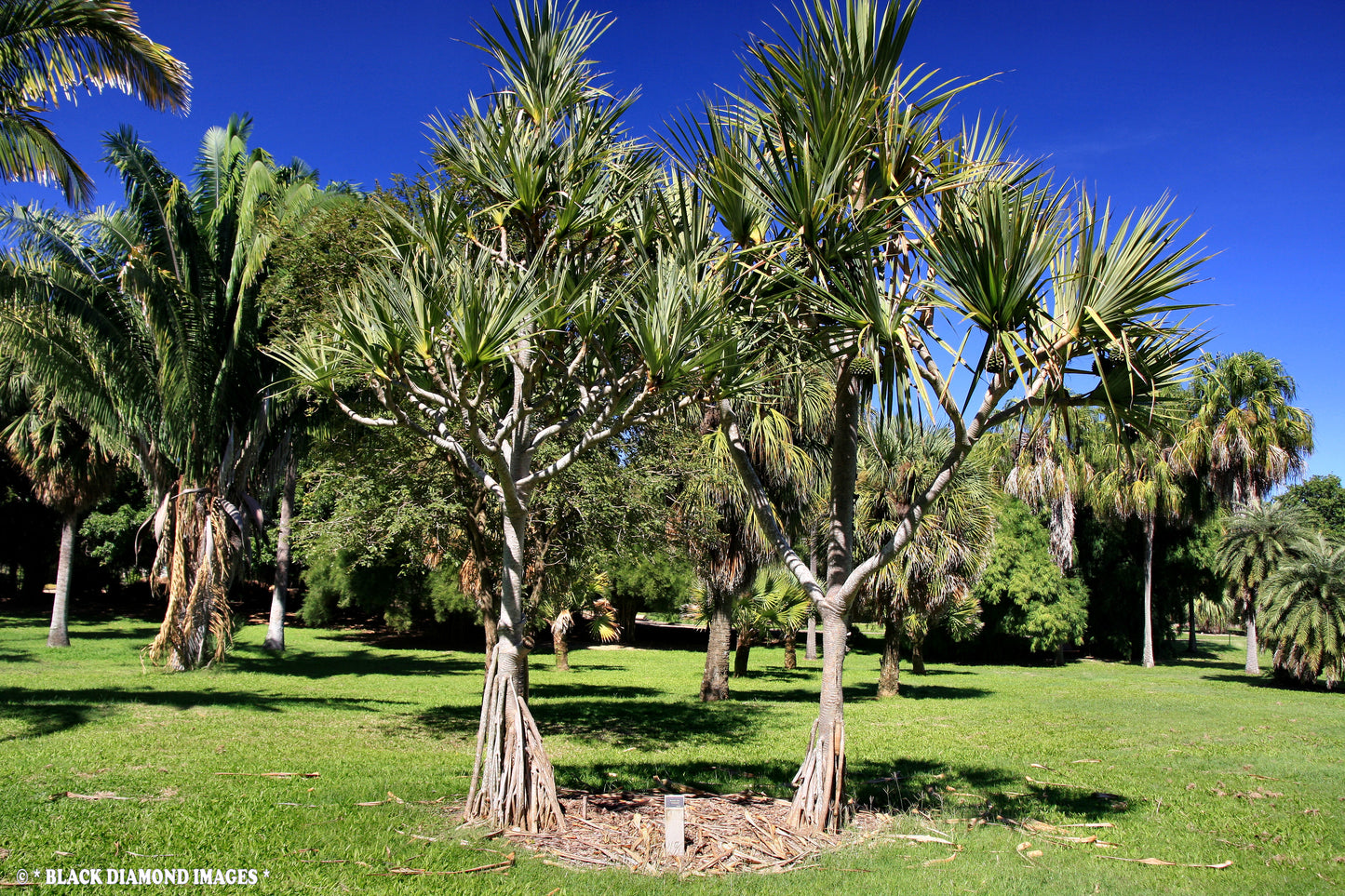Floridaseeds
Screw Pine Pandanus utilis 10 Seeds
Screw Pine Pandanus utilis 10 Seeds
Couldn't load pickup availability
Pandanus utilis, commonly known as the "screw pine" or "screw palm," is a tropical tree-like plant native to Madagascar. This unique plant is not a true palm but belongs to the Pandanaceae family. Hardy in zones 10-11. Here are some key characteristics and information about Pandanus utilis:
Appearance: Pandanus utilis is a striking and distinctive plant with a cluster of long, slender, spiky leaves that spiral around the trunk in a helical, or screw-like, pattern. This gives rise to its common name, "screw pine." The leaves are typically green and have serrated edges.
Growth Habit: This plant can reach heights of up to 20 meters (about 65 feet). It grows with an irregular, branching structure, and its trunk can become quite tall and woody.
Fruit: Pandanus utilis produces a large, distinctive fruit that resembles a pineapple. The fruit is composed of multiple segments, and each segment contains a seed. The fruit is often used for culinary purposes in some regions.
Habitat: Screw pines are typically found in tropical coastal regions and are well adapted to saltwater environments. They can often be seen growing along sandy shorelines and are known for their salt tolerance.
Cultural and Practical Uses: In some cultures, the leaves of Pandanus utilis are woven into mats, baskets, and thatch roofing. The leaves are also used in traditional crafts and for making food wrappers. Additionally, the fruit can be eaten, and its seeds are sometimes ground into flour for various culinary applications.
Landscape and Ornamental Use: In tropical and subtropical regions, Pandanus utilis is often planted as an ornamental tree in gardens and parks due to its unique and visually striking appearance.
Propagation: Screw pines can be propagated from seeds, although it can be a slow process. They are generally hardy and require a warm and tropical climate to thrive.
Pandanus utilis is a fascinating and visually captivating plant that plays a significant role in the cultures and ecosystems of the regions in which it grows. Its spiral leaves and distinctive fruit make it a remarkable addition to tropical landscapes and gardens.
Growing Instructions
Soak the seed in water for 24 hours.
The seeds like moist soil. Prepare a mixture of half potting soil and half sand, perlite or vermiculite. Put the soil in a pot. Water the mixture so that it is moist but not wet.
Put the seeds on the soil.
Cover the seeds with a thin layer of soil.
Water the seeds.
Place the pots in an area with warm temperatures in full sun or part shade. The seeds take 2-3 months to germinate.
When the seedlings are about 1 foot tall, they can be transplanted.

